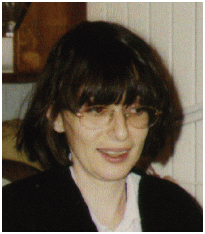 |
KEYNOTE SPEAKER ::
______________________________________________________________
Ronald R. Yager || Michele Sebag || Rudolf Kruse ||
KEYNOTE SPEAKER
Michele Sebag (Laboratoire de Recherche en Informatique, CNRS, Université Paris Sud, France)

With a background in maths (Ecole Normale Superieure, agregation of Mathematics) , Michele Sebag went to industry (Thomson-CSF, now Thales) where she started to learn about computer science, project management, and Artificial Intelligence. She then became a consulting engineer, and was offered the opportunity to start research on Machine Learning for applications in Numerical Engineering, specifically Mechanics of Solids, at Laboratoire de Mécanique des Solides at Ecole Polytechnique. She passed her PhD in between Machine Learning (LRI, Université Paris-Sud Orsay), Data Analysis (Ceremade, Université Paris-10 Dauphine) and Mechanics (LMS, Ecole Polytechnique), and she entered CNRS (CR1, 1991). In 2001, Michele went to LRI, Université Paris-Sud as head of the Inference and Apprentissage research group, founded by Yves Kodratoff. In 2003, she founded together with Marc Schoenauer the research group TAO, Apprentissage and Optimization at INRIA. At present, Michele Sebag, Senior Researcher CNRS, is co-head of the TAO group, Machine Learning and Optimization (INRIA-CNRS-LRI, Université Paris-Sud Orsay). She is president of the French Association for AI, member of the Steering Committee of the PASCAL Network of Excellence (Pattern Analysis, Statistical Modelling, and Computational Learning), co-chair of the European Conference on Machine Learning and Principles and Practice of Knowledge Discovery from Database (ECML/PKDD 2010). She authored and co-authored more than 80 papers related to Machine Learning and Evolutionary Computation and their applications.
Abstract
SpikeAnts: A Spiking Neuron Net modelling the Division of Labor in an Ant Colony
joint work with Sylvain Chevallier et Helene Paugam-Moisy
The emergence of synchronized activities has been observed in many social insect colonies. The question investigated in this talk is how can such a synchronization emerge through local and computationally simple interactions, focusing on the division of labor in an ant colony.
The individual model proposed for an ant is to go foraging --- unless she observes a sufficient foraging activity in its neighborhood. Compared to other social games, e.g. the dying seminar or the segregation model due to Schelling (Choices and Consequences, 1978), or the El-Farol bar, the difference is twofold. On the one hand, the ant model cannot be based on imitation (ants cannot stop foraging just because other ants do not forage, as this would endanger the survival of the colony); on the other hand, ant decisions are asynchronous.
The proposed ant model is based on the competition of two spiking neurons, an active and a passive one, connected to the other spiking neurons modelling the other ants. Interestingly, the spatio temporal coupling of the ants demonstrates three types of dynamic patterns: asynchronous (individualist mode), synchronous aperiodic (some structure emerges), and synchronous periodic (the division of labor is achieved by two workshifts, a day and a night
one). Some order parameters are proposed for the SpikeAnts dynamics and a phase diagram of the emergent synchronization pattern with respect to these parameters is discussed.
|
 |

